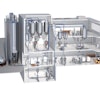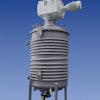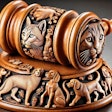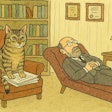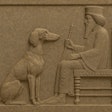Significant differences in overall kcal intake per kilogram of body weight were found. Crude fiber in dog food was positively associated with protein and negatively associated with fat regardless of the dog’s weight. Lean dogs received significantly more crude fiber than did overweight dogs, regardless of the number of treats they received, and the lean dogs’ diets had greater micronutrient densities, suggesting high fiber influences body condition.
Additionally, owners who ate nutrient-rich, calorie-poor diets had normal weight dogs, and owners that fed more table scraps had overweight dogs. Regardless of body condition, 59% of dogs received table scraps, which constituted 21% of daily caloric intake. The nutrient density of scraps fed was variable and did not meet National Research Council recommendations for micronutrient adequacy.
Source : R. Heuberger and J. Wakshlag, 2010. The relationship of feeding patterns and obesity in dogs. JAPAN online July 2010. doi: 10.1111/j.1439-0396.2010.01024.x
